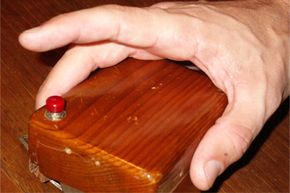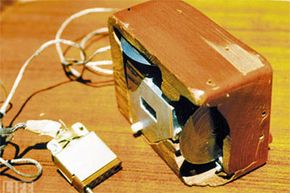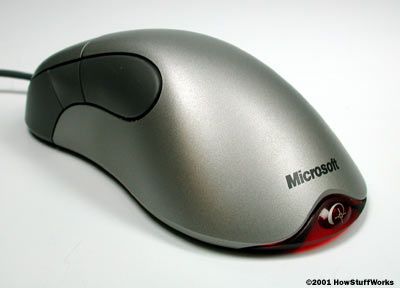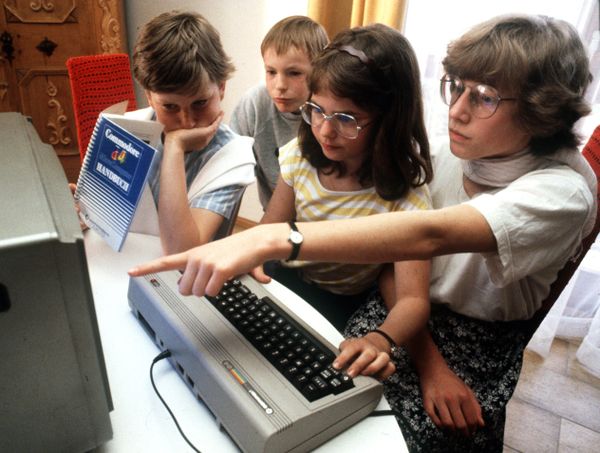In 1963, there was no Internet, computers were anything but personal, and BASIC still had that new-programming-language smell [source: CHM]. Yet, two decades before Apple rolled out the Macintosh, Douglas Engelbart, a professor at Stanford Research Institute (SRI) in Menlo Park, Calif., dreamed up a wired box that would point and click its way into computer history. In a testament to why electrical engineers need marketing departments, he dubbed his invention the "X-Y Position Indicator for a Display System." We know it as the computer mouse [source: MIT].
At the time, Engelbart's team was engaged in an ambitious effort to raise society's "collective IQ" through computers, and he needed quicker, finer control over what we now, tellingly, call the mouse pointer. Arrow keys were too slow and cumbersome; he needed something hand-sized, with perpendicular wheels to track fine movements. Engelbart discussed his idea with co-designer William English, who stuffed the guts of the prototype into a roughly 3 x 4 x 3-inch (7 x 10 x 8-centimeter) block of wood [sources: Alexander; Biersdorfer; CHM; DEI; Markoff].
Advertisement
The block rode atop two knife-thin wheels, one running left-right and the other tracking up-down. It sported a single button, not because Steve Jobs went back in time and said it should, but because only one microswitch would fit (Jobs didn't build his time machine until much later). Someone in his research group said it resembled a mouse, and the name stuck. A later, commercially produced version added two more buttons, rounded the case to a more familiar shape and moved the "tail" to the top to keep it out of the way [sources: Alexander; Biersdorfer; CHM; DEI; Markoff].
Using the first mouse was a bit like riding one of Dr. Dolittle's pushmi-pullyus, but NASA saw its potential. So did Xerox's Palo Alto Research Center, which in 1973 paired a three-button, trackball mouse with the Alto, the first small computer with a graphical user interface (GUI). Jobs visited the center in 1979, and both Apple and Microsoft would later pluck some of Xerox's Palo Alto researchers [sources: Alexander; Biersdorfer; Markoff].
Although the Alto didn't go anywhere, the pattern had been set. With Apple's 1984 launch of the Macintosh and Microsoft's 1985 debut of Windows 1.0, the GUI had arrived, and the revolutionary transition from organizational mainframes to personal computers was in full swing. Graphics-driven machines and software helped propel the mouse -- now equipped with a grime-collecting rubber ball instead of two wheels -- to its present ubiquitous status [sources: Alexander; Biersdorfer].
But before the mouse roared, there was a man with a vision, and that vision extended far beyond a brick with a button. In 1950, Douglas Engelbart envisioned a wired world very like our own; because he couldn't see how to get there, he set about helping to invent it [source: Markoff].
Advertisement



